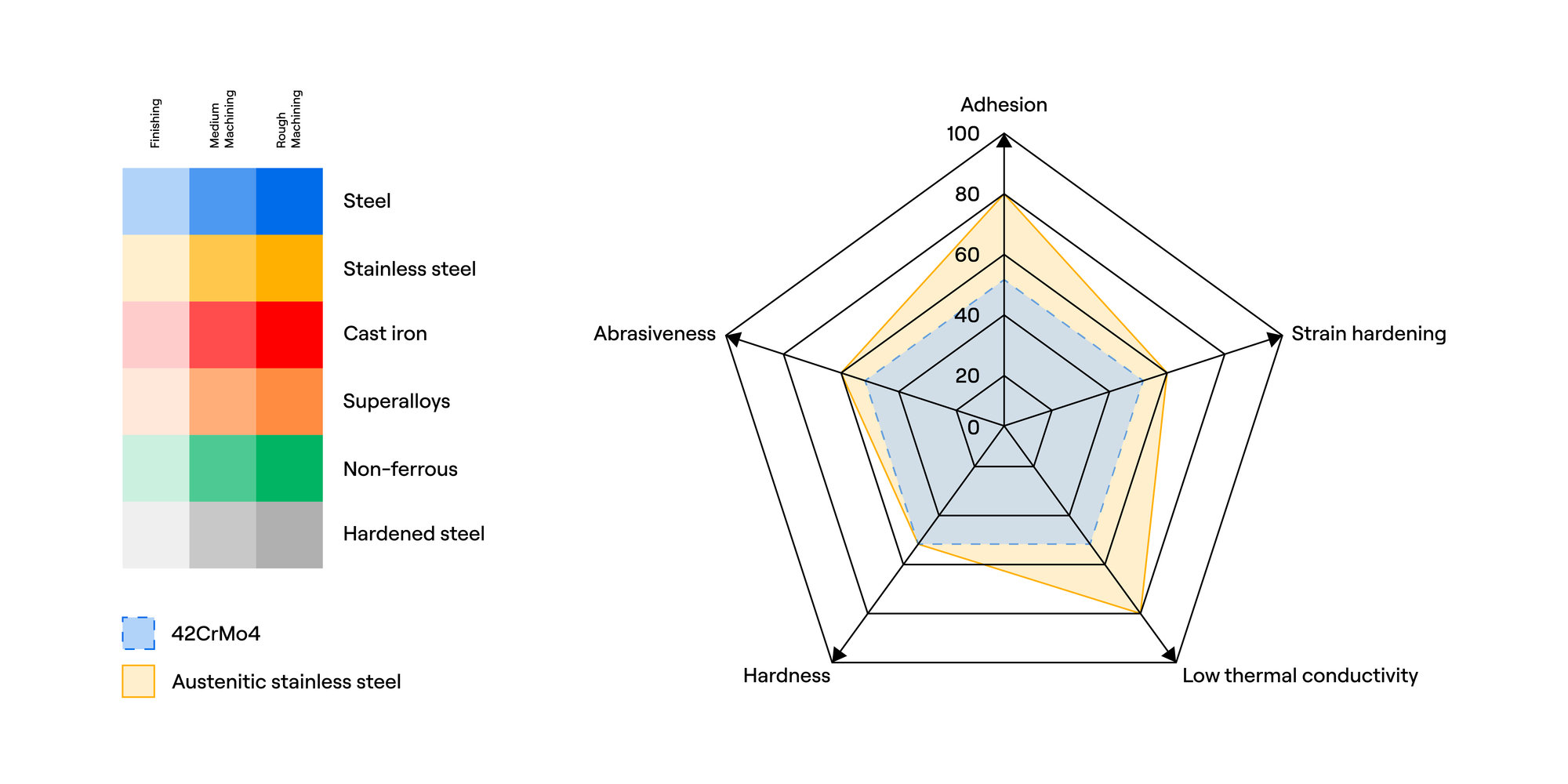What is Stainless Steel?
Stainless steel alloys are ideal for many applications. To machine these alloys successfully, shops must understand their properties.Stainless steels are widely used across various industries for their strength, durability and resistance to oxidation and staining. Products and components made from these alloys are easy to clean and sterilize, and in terms of sustainability, the material is recyclable. But "stainless steel" is a category, not a single alloy. To make the best use of stainless steels, shops need to understand how these alloys behave when machining them.
Automotive manufacturers often produce vehicle exhaust systems, trim and structural components from stainless steel. Manufacturers in the medical industry rely on stainless steel for surgical instruments, implants and medical devices. Although some medical parts increasingly rely on other metals such as titanium, stainless steel remains a mainstay of industrial production.
In the oil and gas industry, stainless steel is the material of choice for piping, offshore platforms and storage tanks that must withstand extremely harsh environments. Stainless steel's easy hygiene compliance makes it desirable in the food and beverage industry for processing equipment, storage vessels, kitchen utensils and more. Other industries such as construction, architecture and marine depend on stainless steels for everything from roofing and structural supports to marine hardware, shipbuilding and desalination plants. Stainless steel alloys excel in these applications because of the benefits of their metallurgy, which confers oxidation resistance, easy hygiene compliance and other beneficial traits.

Stainless steel is more difficult to cut than regular steels because of its toughness and thermal resistance. Greater chromium and nickel content, along with molybdenum, tend to reduce the machinability of austenitic stainless steels. Alloys that contain titanium may also contribute to abrasive wear on cutting tools.
Because stainless steel alloys are poor heat conductors, more heat stays in the cut instead of dissipating through chips. This increases strain hardening and raises tool and insert usage by between 20% and 40%. Thus, stainless steels are more costly to cut than simple steels.
Additions of Sulphur – exceeding 0.020% – may increase the machinability of stainless steel considerably but also may affect other properties such as corrosion resistance, weldability and hot ductility. For this reason, bar material is treated with Sulphur for improved machinability more often than plate material. Stainless steels with improved machinability often bear brand names such as Sanmac®, Prodec® and Ugima®.
Stainless steels are iron-based alloys used for their heat and corrosion resistance. Metallurgists classify stainless steels in five basic groups: austenitic, ferritic, martensitic, duplex and precipitation-hardening. The composition of individual alloys determines their specific characteristics as workpiece materials and in machining. All five types of stainless steels contain chromium, which forms a passive layer of chromium oxide on the surface to prevent corrosion and rust.
These non-magnetic alloys typically contain 16% to 26% chromium and up to 35% nickel, with low carbon content. This gives them excellent corrosion resistance, good formability and good weldability. Some austenitic stainless steels also contain molybdenum and titanium, which can reduce machinability and increase tool wear.
Examples:
With little to no nickel, these stainless steels contain 10.5% to 30% chromium and are often used in applications with limited needs for corrosion resistance. They are also magnetic and generally less expensive than austenitic grades.
Examples:
430: Typically used in automotive trim, pump shafts, turbines, kitchen appliances, food processing, hot water heaters and architectural applications.
With 12% to 18% chromium and higher carbon content, these steels deliver high strength and hardness, are magnetic and heat treatable, and provide moderate corrosion resistance.
Examples:
These alloys consist of a balanced mixture of austenitic and ferritic structures – around 22% to 25% chromium and 5% to 7% nickel – and often contain molybdenum. They provide high strength and excellent corrosion resistance, particularly to stress corrosion cracking and pitting. This means that manufacturers can use less material and reduce workpiece weight. Duplex stainless steels also contain less nickel than corresponding austenitic grades, which is often a cost benefit.
Examples:
These steels contain chromium and nickel, along with elements such as aluminum, copper and niobium that allow for precipitation hardening. They can be heat treated to achieve high strength and hardness with good corrosion resistance.
Examples:
- Larger, more robust and stronger tools last longer when cutting stainless steel.
- With a bigger, thicker insert, more heat dissipates in the insert instead of in the cutting edge.
- Choose tooling with a tough carbide grade, not a wear-resistant one, to withstand chip breakage and edge chipping from strain hardening.
- A strong insert with sharp geometries is most advantageous.
- Control cutting speeds to extend tool life and improve machining.
Tooling manufacturers provide various resources to help customers ease and optimize their machining. These include self-paced material to handle many machining conditions, as well as access to experts to address more-complex problems. The Seco Assistant app optimizes tooling and handles tool wear effectively with stainless steel. The Tool Optimization feature helps identify wear patterns and select cutting parameters to minimize wear.
Simultaneously, Seco continues its commitment to technical training and education through its Seco Technical Education Program (STEP). As manufacturers struggle to overcome the skills gap and to train new machinists to tackle production challenges, this proven instruction offers integral assistance with the problems of machining stainless steel workpieces.
Inline Content - Survey
Current code - 5fce8e61489f3034e74adc64

